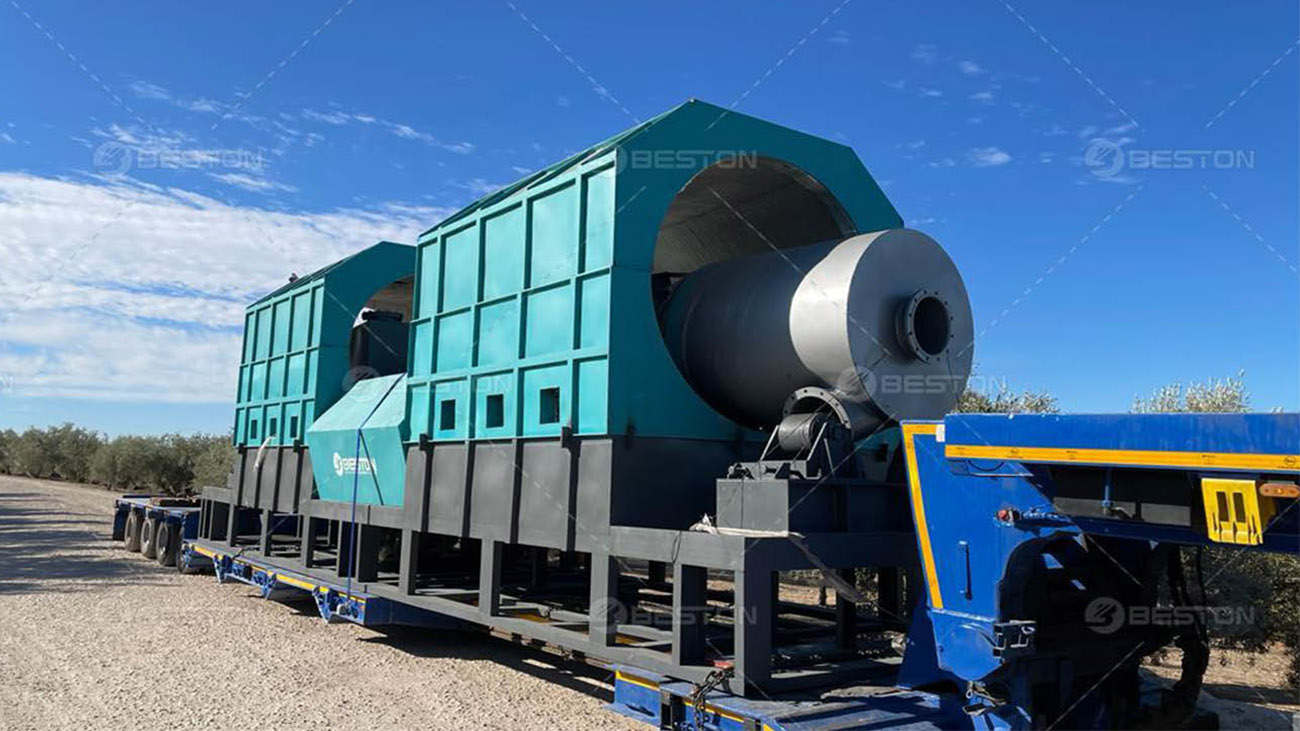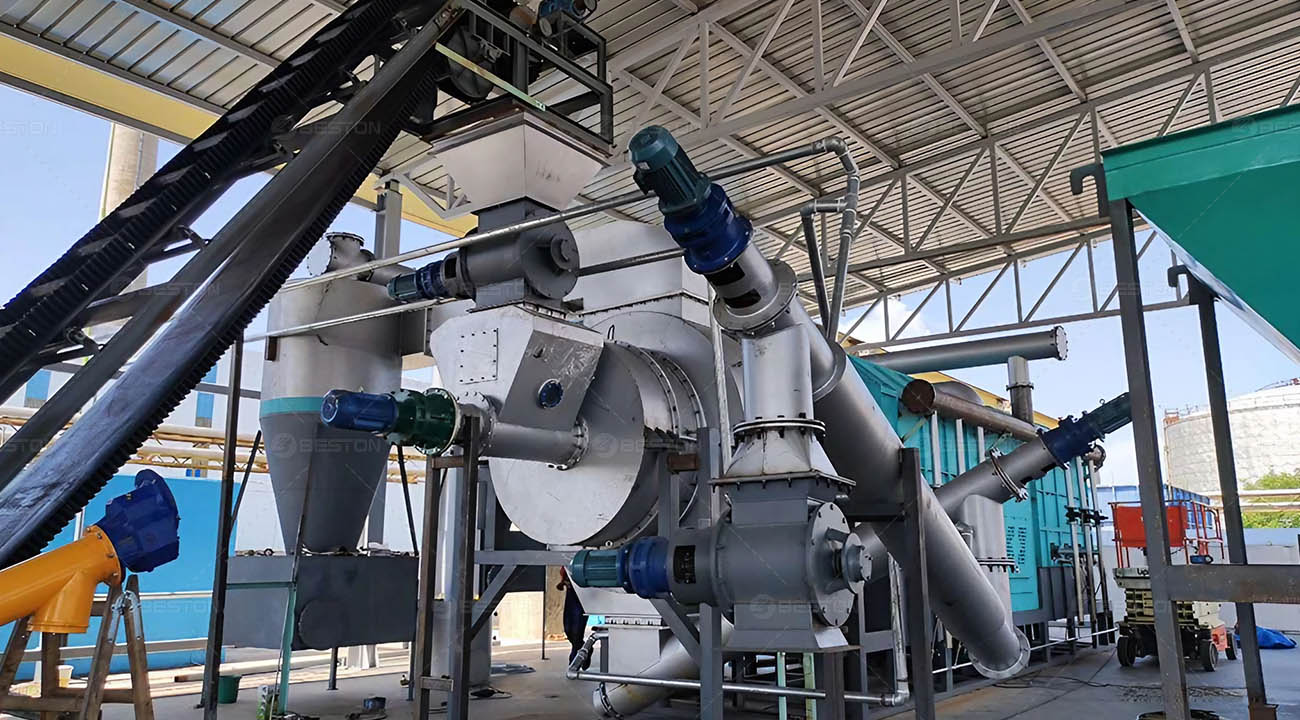Introduction
The Growing Importance of Carbon Sequestration
In the face of escalating climate change concerns, carbon sequestration has emerged as a critical tool for mitigating the levels of atmospheric carbon dioxide (CO2). As the world grapples with the need to reduce greenhouse gas emissions, various strategies have been devised to capture and store carbon, one of which involves biochar, a versatile carbon-rich material. This article delves into the pivotal role played by biochar production equipment in advancing the carbon sequestration industry.
Biochar as a Key Player in Carbon Sequestration
Biochar, a solid, porous material created through the process of pyrolysis, offers a sustainable and scalable approach to sequestering carbon in a stable form. This article explores the various facets of biochar production equipment and how it contributes to the broader objectives of carbon capture and storage.
Understanding Biochar Production Equipment
Pyrolysis: The Heart of Biochar Production
- Pyrolysis Reactors: A Closer Look
At the core of biochar production lies the process of pyrolysis, where organic biomass is subjected to high temperatures in the absence of oxygen. This section examines the different types of pyrolysis reactors, such as rotary kilns and fluidized bed reactors, each with its unique advantages and drawbacks.
- Temperature Control in Pyrolysis
Achieving precise temperature control during pyrolysis is crucial to optimize biochar quality. Discussing advanced techniques like induction heating and the role of thermocouples, we delve into the importance of maintaining specific temperature ranges throughout the pyrolysis process.
Feedstock Selection and Preparation
- Biomass Variety Matters
The type of biomass used significantly impacts biochar properties. We explore the intricate relationship between feedstock selection and biochar characteristics, shedding light on the importance of diverse feedstock options.
- Moisture Content and Size Reduction
Effective moisture management and biomass size reduction are pivotal for efficient pyrolysis. This section explores techniques such as predrying and chipping, elucidating their impact on the production process in the biochar machine.
Efficiency and Sustainability
Energy Consumption and Carbon Footprint
- Innovations in Energy-Efficient Designs
Minimizing energy consumption in biochar production is crucial for reducing its carbon footprint. Here, we delve into innovative designs and technologies aimed at enhancing energy efficiency in pyrolysis reactors.
- Carbon Neutrality in Biochar Production
We examine strategies for achieving carbon neutrality in biochar production, including carbon offset initiatives and renewable energy integration, highlighting the industry’s commitment to sustainability.
Waste Management and Emissions Control
- Managing Byproducts: Syngas and Heat
The byproducts of biomass pyrolysis plant, such as syngas and excess heat, can be harnessed for various purposes. This section discusses the efficient utilization of these byproducts, contributing to the sustainability of biochar production.
- Minimizing Harmful Emissions
Emissions control is paramount in mitigating environmental impacts. We explore methods for minimizing harmful emissions, such as the capture of volatile organic compounds and particulate matter.
Scaling Up: Commercial Biochar Production
Industrial Biochar Production Lines
- Capacity and Throughput
Scaling up biochar production requires robust industrial production lines capable of handling large volumes of feedstock. We examine factors such as capacity and throughput in commercial-scale biochar production.
- Automation and Process Control
Automation plays a vital role in maintaining consistency and quality in large-scale biochar production. This section discusses the integration of automation and advanced process control systems.
Economic Viability and ROI
- Analyzing Production Costs
A comprehensive analysis of the general costs is essential for assessing the economic viability of biochar production, especially the charcoal making machine price. We delve into cost components and strategies to optimize production economics.
- Market Opportunities and Pricing Strategies
Exploring the diverse applications of biochar, we analyze market opportunities and pricing strategies to help stakeholders make informed decisions in this burgeoning industry.
Biochar Quality and Application
Quality Assurance in Biochar Production
- Measuring Biochar Properties
Ensuring consistent biochar quality requires precise measurement of properties like porosity, surface area, and pH. We explore analytical techniques and quality control measures in biochar production.
- Quality Standards and Certification
Certification and adherence to quality standards are vital for market acceptance. This section outlines existing quality certifications and their significance in the biochar industry. You need a professional biochar equipment manufacturer to provide you with this information. Beston Group is an option worth considering.
Diverse Applications of Biochar
- Agriculture and Soil Improvement
Biochar finds extensive use in agriculture for enhancing soil properties and crop productivity. We discuss its role in soil carbon sequestration, nutrient retention, and sustainable farming practices.
- Carbon Storage and Climate Mitigation
Biochar’s contribution to long-term carbon storage and climate change mitigation is explored in this section. We analyze its potential as a valuable tool in global efforts to combat climate change.
Future Prospects and Challenges
Technological Advancements
- AI and Data Analytics in Biochar Production
The integration of artificial intelligence and data analytics promises to revolutionize biochar production. We examine how these technologies can optimize process efficiency and quality control.
- Integration with Renewable Energy Sources
The future of biochar production involves greater synergy with renewable energy sources. We explore the potential of biomass-derived energy for sustainable biochar production.
Regulatory and Environmental Considerations
- Carbon Credits and Incentives
Carbon credit schemes and incentives can drive the adoption of biochar production. We discuss current regulatory frameworks and their implications for the industry.
- Environmental Impact Assessments
The article concludes by highlighting the importance of comprehensive environmental impact assessments in biochar production, ensuring a balance between industry growth and ecological responsibility.